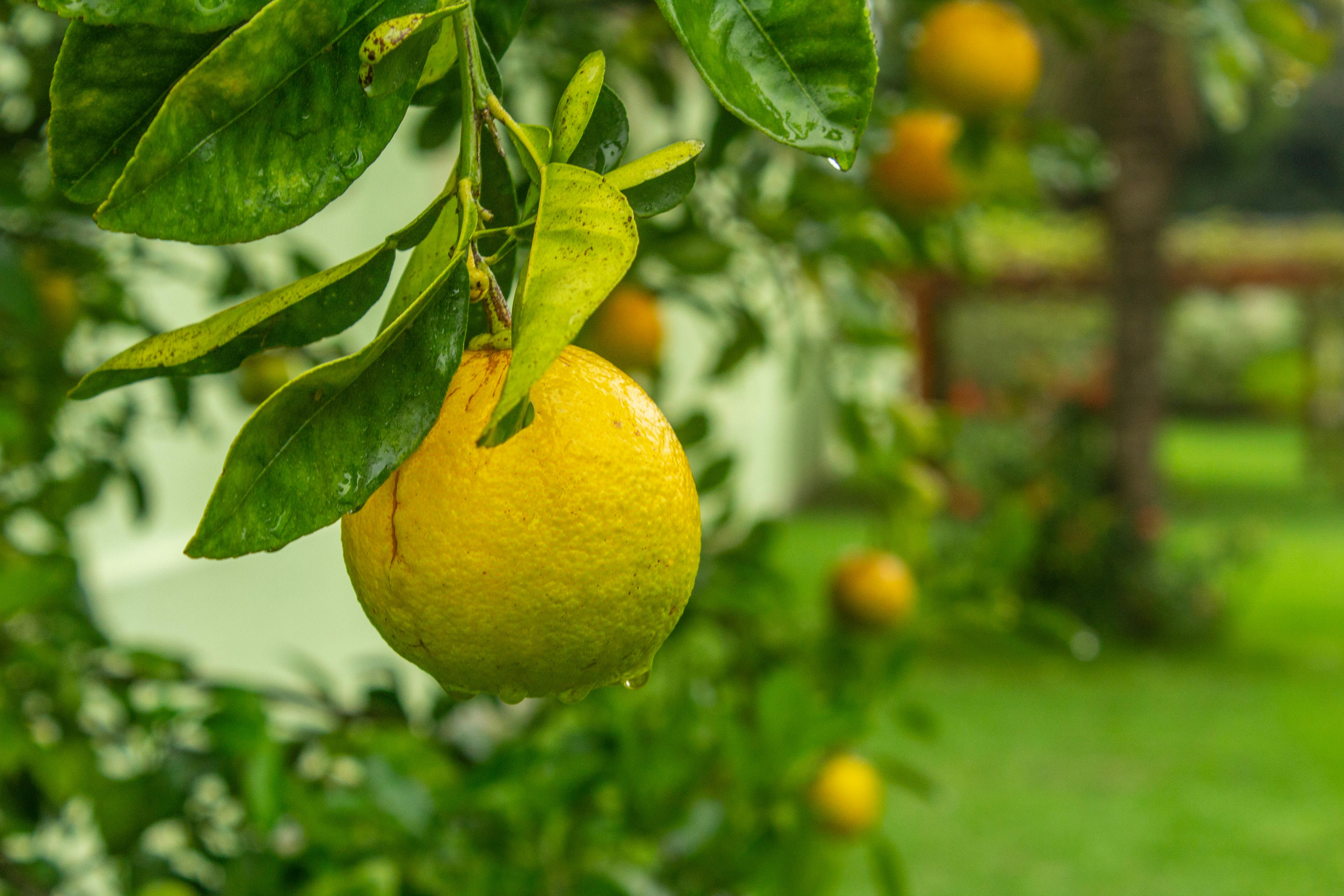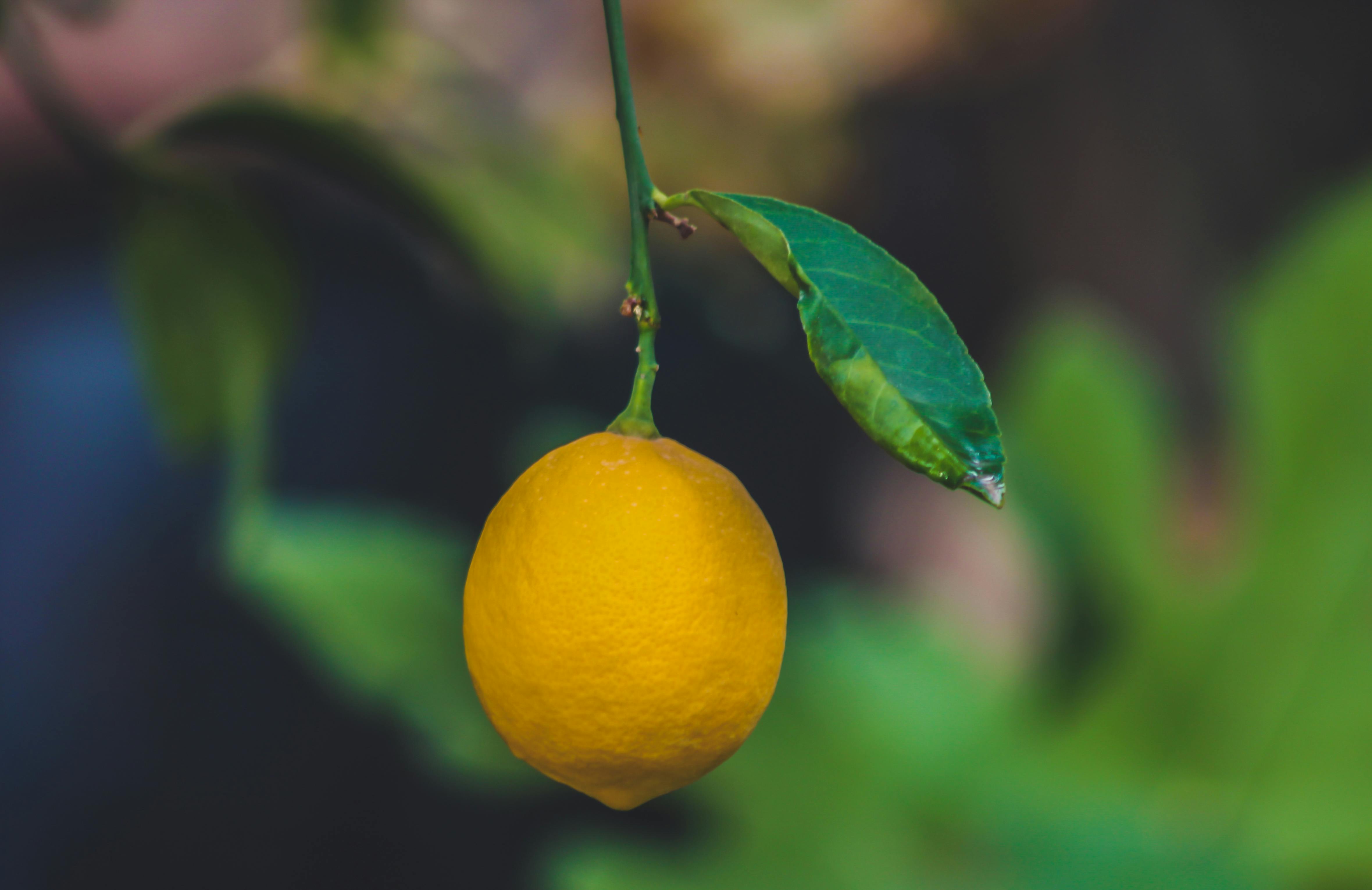Getting a lemon tree to fruit can be a rewarding experience. With the right care and attention, you can ensure your lemon tree produces an abundance of juicy lemons. This guide will provide you with helpful tips on how to get your lemon tree to bear fruit. By following these steps, you can ensure that your lemon tree will reward you with a plentiful harvest.When choosing the right variety of lemon tree, there are several factors to consider. First, consider the climate and environment in which the tree will be planted. Different varieties of lemon trees can tolerate different levels of moisture, temperature, and sun exposure. Secondly, think about how much space you have available for the tree to grow. Some varieties grow larger than others and require more space. Lastly, think about how much fruit you would like from your tree. Some varieties produce more or larger fruit than others. Once you have considered these factors, you can select an appropriate variety for your needs.
Planting the Lemon Tree
Planting a lemon tree is a great way to add a touch of beauty and freshness to your garden. The citrus fruit is also a delicious addition to many recipes. It’s important to consider the climate and soil type before planting a lemon tree. If you’re planting in an area with cold winters, you may want to consider growing the tree in a pot so it can be moved indoors during cold weather.
When selecting the lemon tree, look for one that is young and healthy. Choose a variety of lemon that is suited for your local climate, such as Meyer lemons for milder climates or Eureka lemons for colder climates. Make sure the root ball of the tree is moist before planting it in well-draining soil or potting mix.
Prepare a hole that’s twice as wide as the root ball and just as deep. Add some compost or peat moss into the hole for extra nutrients. Place the root ball into the hole and fill in around it with soil, pressing down firmly but gently. You can also add mulch around the base of your new lemon tree to help retain moisture.
Water your new lemon tree regularly, at least once per week during hot weather and every 10-14 days during cooler weather. Fertilize your tree once every month or two using an organic fertilizer such as fish emulsion or compost tea. Trim any dead branches or leaves from time to time to encourage healthy growth.
Once established, your lemon tree should produce fragrant blossoms followed by juicy lemons throughout most of the year! Enjoy harvesting these sweet fruits from your own backyard!
Selecting an Ideal Location for Your Lemon Tree
Finding the perfect spot for your lemon tree is key to its success. To ensure healthy growth and abundant fruit, it is important to select an area that offers the right amount of sun, water, and soil drainage. Before planting your lemon tree, consider the following factors:
Sunlight
Lemon trees require full sun for optimal growth and fruit production. Aim to find a location in your yard or garden with six to eight hours of direct sunlight each day. Too much shade can stunt growth and prevent flowering and fruit set.
Water
Lemon trees need regular water but will not tolerate standing water or overly soggy soil. To ensure proper drainage, choose a spot that has well-draining soil and avoid low areas where water may collect. A drip irrigation system is ideal for watering lemon trees as it will deliver consistent amounts of water directly to the roots without wetting the foliage.
Airflow
Ensure that there is adequate airflow around your lemon tree by avoiding planting in crowded locations or near large structures or walls. Poor air circulation can increase humidity levels and create a conducive environment for fungal disease development. Aim to find an area with good air movement or create one by pruning nearby plants and trees.
Finally, when selecting a location for your lemon tree keep in mind its mature size as some varieties can reach heights of up to 25 feet. By finding an ideal spot with plenty of sun, good drainage, adequate airflow, and enough space around it for its development you will be helping ensure successful growth and abundant fruit production from your lemon tree!
Preparing the Soil for Planting a Lemon Tree
The first step to growing a healthy lemon tree is preparing the soil before planting. The soil should be enriched with organic matter such as compost, aged manure, and peat moss to help retain moisture and provide nutrients to the plant. Additionally, it is important to make sure that any existing weeds are removed and that the soil is free of clods or stones. The pH level of the soil should be tested prior to planting so that any necessary adjustments can be made. If necessary, lime can be added to raise the pH level of acidic soils, while sulfur can be used to lower the pH level of alkaline soils.
After adding organic matter and making sure that the soil is free from weeds and stones, it is important to create a hole for planting that is twice as wide as your lemon tree’s root ball but just as deep. When filling in around this hole with soil, make sure to tamp down firmly so that there are no air pockets around the roots of your lemon tree. Finally, water your newly planted lemon tree thoroughly until you see water pooling at its base. This will ensure that your lemon tree has enough water for its roots upon planting.
Caring for Your Lemon Tree
Lemon trees require special care in order to produce the sweetest, juiciest lemons. If you’ve recently purchased a lemon tree or are thinking of doing so, here’s what you need to know about caring for it. Though lemon trees are relatively easy to care for, they do require specific conditions and proper maintenance.
When selecting a location for your lemon tree, it’s important to choose an area that receives plenty of sunlight throughout the day. Lemon trees need at least 8 hours of direct sunlight per day in order to produce optimal fruit. A warm, dry climate is also necessary; if your climate is too cold, be sure to bring your tree indoors during winter months.
When it comes to watering, it’s best to keep the soil moist but not saturated. Overwatering can cause root rot and other issues with the tree’s health. To determine whether it needs water, stick your finger into the soil up to the second knuckle; if it feels dry, water thoroughly until water runs from the bottom of the pot.
Lemon trees thrive with regular fertilization. It’s best to use a fertilizer specifically formulated for citrus trees; these typically contain high levels of nitrogen and potassium which are essential elements for lemon growth and development. Apply fertilizer three times a year following manufacturer instructions; once in early spring right after flowering and twice during summer months when fruit is developing.
Finally, pruning is important in keeping your lemon tree healthy and producing sweet lemons year after year. Prune away dead branches and any that are crossing over or growing inward towards the center of the tree as well as any suckers growing from below the bud union or graft union on grafted trees. Prune lightly throughout the growing season as needed; this will help promote air circulation and encourage new growth.

Watering and Fertilizing Your Lemon Tree
Watering your lemon tree is essential for ensuring it grows healthy and produces a large crop of juicy lemons. You should water your lemon tree at least once a week, but more often in hot weather. The best way to water your lemon tree is to give it a deep, thorough watering, allowing the soil to become saturated and moist, but not waterlogged. If you’re unsure if the soil has been sufficiently watered, stick your finger in the soil up to the second knuckle; if it’s damp, the tree has enough water.
Fertilizing your lemon tree will help keep it healthy and productive. It’s best to apply fertilizer once a year during the spring or early summer when growth begins. Use a balanced fertilizer such as 10-10-10 or 8-8-8 (nitrogen-phosphorus-potassium) at the rate suggested by the manufacturer. Spread the fertilizer in a circle about 18 inches from the trunk of the tree so that when you water it in, it will be absorbed by both roots and leaves. Avoid getting any fertilizer on the trunk of the tree as this can damage its bark.
Finally, mulching around your lemon tree is important for keeping weeds away and helping retain moisture in hot weather. A 2-3 inch layer of mulch around your lemon tree will help protect its roots from extreme temperatures while keeping weeds at bay. Be sure to check on your lemon tree regularly throughout its growing season to ensure that it’s adequately watered and fertilized for optimal health and productivity!
Pruning Your Lemon Tree
Pruning your lemon tree is an important part of keeping it healthy and productive. Pruning helps shape the tree and encourages new growth, as well as removes any dead or diseased branches. Pruning also helps to increase air circulation, which can help prevent fungal diseases from developing in the tree. It is also important to remove any excess suckers or water sprouts that can steal nutrients away from the rest of the tree.
When pruning your lemon tree, it is important to use clean and sharp pruning tools. Dull tools can cause damage to the tree by ripping off bark instead of cutting cleanly through branches. Make sure to cut at a 45-degree angle just above a leaf node, or the point where a leaf attaches to a branch. This will encourage new growth in that area.
You should start pruning your lemon tree when it is young, and continue throughout its life cycle. Start by removing any dead or damaged branches first, then begin shaping the tree into an open vase like form with multiple scaffold branches. This will allow for better air circulation within the canopy which will reduce fungal diseases. After you have shaped the main canopy, you should then begin thinning out interior branches to let more light into the center of the tree.
It is also important to remove any suckers or water sprouts that are growing below the graft union on your lemon tree. These will not produce lemons and will divert nutrients away from other parts of your tree. You can easily identify these by their lack of thorns and small leaves compared to other parts of your lemon tree.
By regularly pruning your lemon tree you can ensure that it remains healthy and productive for many years to come!
Controlling Insects on Your Lemon Tree
Taking the necessary steps to control insects on your lemon tree can help you get the best results in terms of fruit production. Inspect your tree carefully for signs of insect infestations and act quickly to prevent damage. Common pests include white flies, aphids, mealy bugs, and scale. To control these pests, use a combination of physical removal and chemical treatments. Start by removing any visible insects by hand and then spraying the tree with an approved insecticidal soap or horticultural oil. Be sure to follow the instructions carefully when applying any chemical treatments.
Controlling Disease on Your Lemon Tree
There are several common diseases that can affect lemon trees, including citrus blight, root rot, scab, and citrus decline. To prevent these diseases from affecting your tree, make sure to plant it in well-draining soil and keep it well-watered during dry periods. Prune your tree regularly to remove dead branches and improve air circulation between the foliage. If you notice signs of disease on your lemon tree, contact a professional for proper diagnosis and treatment recommendations.

Conclusion
Growing a lemon tree and harvesting its fruit is incredibly rewarding. With the right conditions, your lemon tree can yield delicious fruits for many years to come. You will need to ensure that your tree has plenty of sunlight, water and fertilizer. Prune your tree regularly and protect it from pests and diseases. The most important factor in getting a lemon tree to fruit is patience – it may take several years before your lemon tree will start to bear fruit.
With the right care and attention, you will be able to get your lemon tree to produce beautiful, juicy fruits for years to come. By following these simple steps, you can enjoy the rewards of growing a healthy and productive lemon tree that will provide you with delicious lemons for many years.



